What is shoulder replacement surgery?
Shoulder replacement surgery is a procedure to remove and replace the damaged parts of the shoulder joint with artificial components. It is usually performed to treat severe arthritis, complex fractures, or long-standing shoulder damage that no longer responds to other treatments.
The goal is to relieve pain, restore movement, and improve your ability to carry out everyday activities.
When is surgery recommended?
You may be offered shoulder replacement surgery if:
- You have advanced arthritis in your shoulder
- You’re in constant pain that affects sleep or daily life
- You’ve tried physiotherapy, injections, and medication without relief
- You’ve had a severe fracture that can’t be fixed
- Your shoulder is stiff and weak due to previous injury or wear
Shoulder replacement is usually considered when other treatments are no longer effective and your quality of life is being affected.
What does the surgery involve?
The operation is done under general anaesthetic and takes about 1.5 to 2 hours. Depending on your condition, your surgeon may perform:
- Total shoulder replacement: Both the ball (humeral head) and socket (glenoid) are replaced with metal and plastic implants
- Partial shoulder replacement: Only the ball of the joint is replaced
- Reverse shoulder replacement: Used when the rotator cuff is severely damaged (see reverse shoulder replacement page)
The type of replacement will depend on your symptoms, scan findings, and shoulder function.
Recovery and rehabilitation
After surgery, your arm will be supported in a sling to allow the joint to heal. You’ll start gentle movements under the supervision of a physiotherapist within a few days.
Recovery timeline:
- Light activity or desk work: 4 to 6 weeks
- Driving: 6 to 8 weeks
- Strengthening and range of motion: 3 to 6 months
- Full recovery: up to 12 months
Rehabilitation is crucial for a successful outcome and includes regular physiotherapy exercises.
Risks and complications
Shoulder replacement is a safe and proven procedure, but all operations carry some risk. These include:
- Infection
- Blood clots
- Nerve injury
- Implant loosening or wear over time
- Dislocation
- Ongoing pain or stiffness
Your surgeon will explain the risks specific to your case and how they are managed.
How long does a shoulder replacement last?
Modern implants are designed to last 10 to 20 years or more, especially with appropriate use and activity modification. Avoiding heavy lifting and overhead strain can help preserve your new joint.
Will I get full use of my arm again?
Most people experience a significant improvement in pain and shoulder movement. You may not regain full overhead strength or motion, but daily tasks like dressing, washing, lifting light items, and reaching become much easier and more comfortable.
Why choose Midlands Orthopaedic Clinic?
Midlands Orthopaedic Clinic offers specialist care in shoulder replacement surgery, with expert consultants experienced in managing both straightforward and complex cases. We provide modern implants, enhanced surgical techniques, and personalised rehabilitation programmes to ensure the best outcomes for each patient.
From initial consultation to full recovery, you’ll be supported by a multidisciplinary team focused on restoring your comfort and function.
Get in touch
If you’re struggling with shoulder arthritis or long-standing shoulder problems and want to explore joint replacement surgery, we’re here to help.
Contact Midlands Orthopaedic Clinic today to arrange your consultation with a shoulder specialist. Call us or fill in our online enquiry form.




